GAIA-ESO Research @ Arcetri
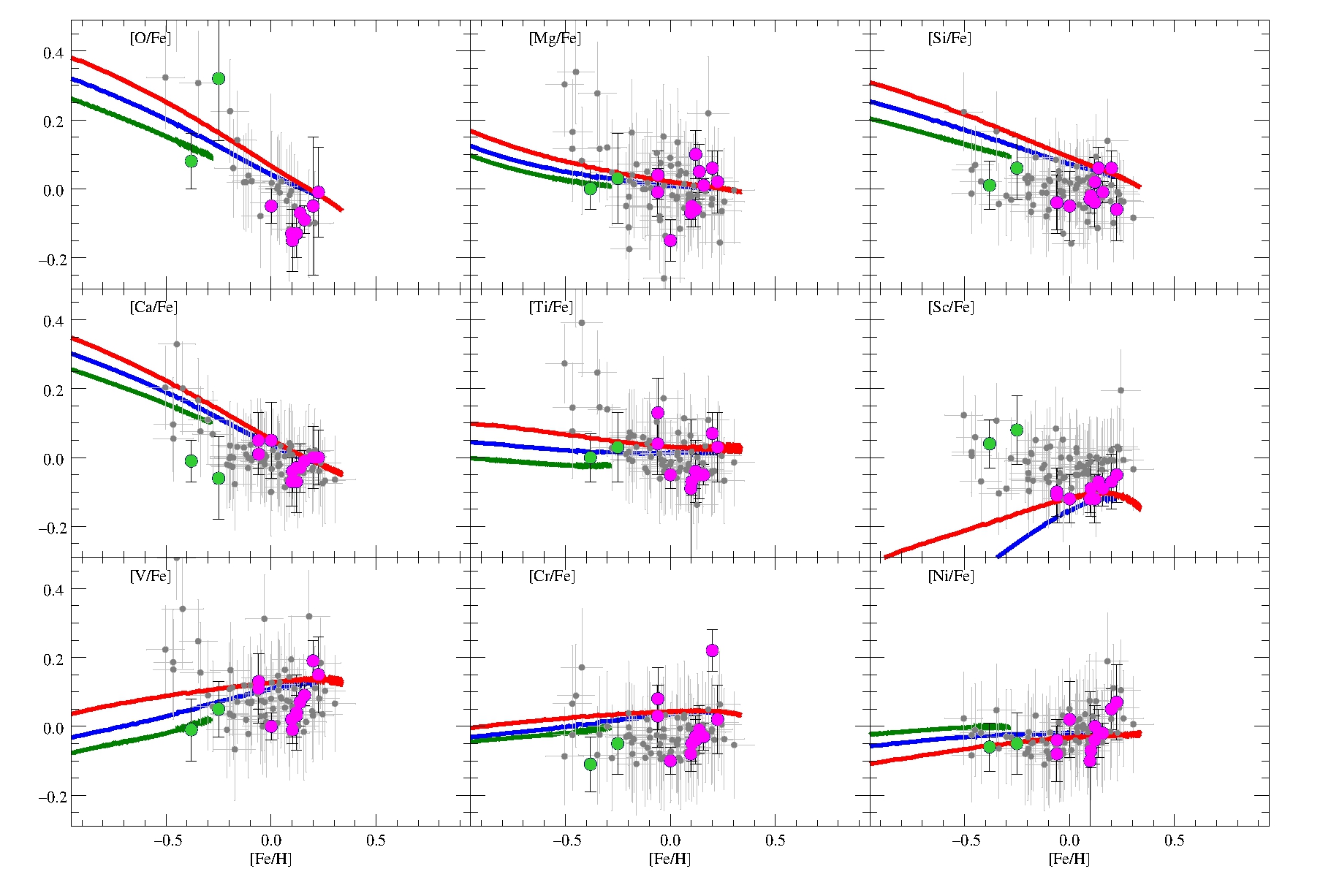
In the Figure, we show the abundance patterns of the member stars of several open clusters (colour-coded by distance, magenta for RGC <8 kpc, and green for RGC > 8 kpc) and of thin disc field stars (in grey) whose parameters and abundances were released with Gaia-ESO DR4. The three curves represent the chemo-dynamical model of Kubryck et al. (2015), computed for three Galactocentric radii: 6 kpc (red), 8 kpc (blue) and 15 kpc (green). The diverse abundance patterns indicate that different processes were in place to create each element, and the model is able to reproduce them. It is interesting to notice the differences between [O/Fe] and [Mg/Fe] vs. [Fe/H] (first and second panels). Oxygen and Magnesium are usually considered to be produced by similar processes. They are thus used in an equivalent way to trace the formation time-scales of different Galactic stellar populations.
The results recently published by Magrini et al. (2017) indicate, as expected, a complex and diverse nucleosynthesis of the various elements produced by massive stars, the so-called alpha-elements, including O and Mg. In particular, these differences are strong in the high metallicity regimes, pointing towards a different origin of these elements and highlighting the risk of considering them as a single class with common features.
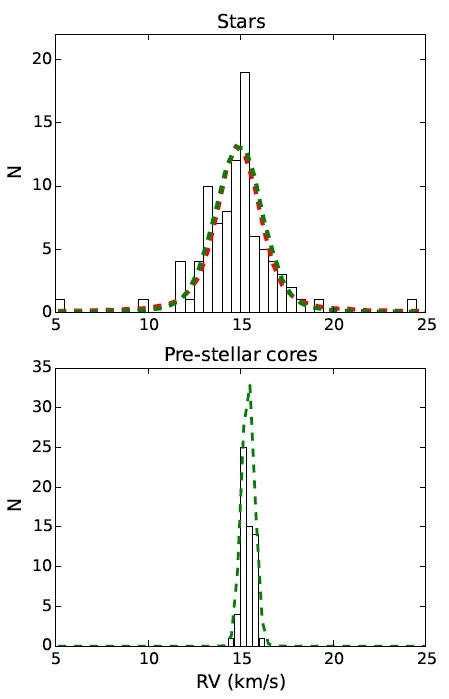
Most of the stars form in clusters that evolve and disperse in the galactic field within 100 Myr. Despite this process strongly influences the the properties of the Galactic stellar populations, the physical mechanisms driving the dynamical evolution of young star clusters are not fully understood. Thanks to the precision of the stellar radial velocities measured from the Gaia-ESO data, Arcetri Astronomers in collaboration with other teams of the consortium have been able to study the relative motions of the stars within several young clusters. These studies led to important discoveries, like the presence of kinematically distinct population in the observed clusters, and a significant difference between the velocities of the pre-stellar cores and stars. These discoveries are reshaping the theory on the dynamical evolution of young stellar clusters. Figure: Radial velocities distribution of stars (upper panel) and pre-stellar cores (lower panel) of the young cluster Chamaeleon I (from Sacco et al. 2017)
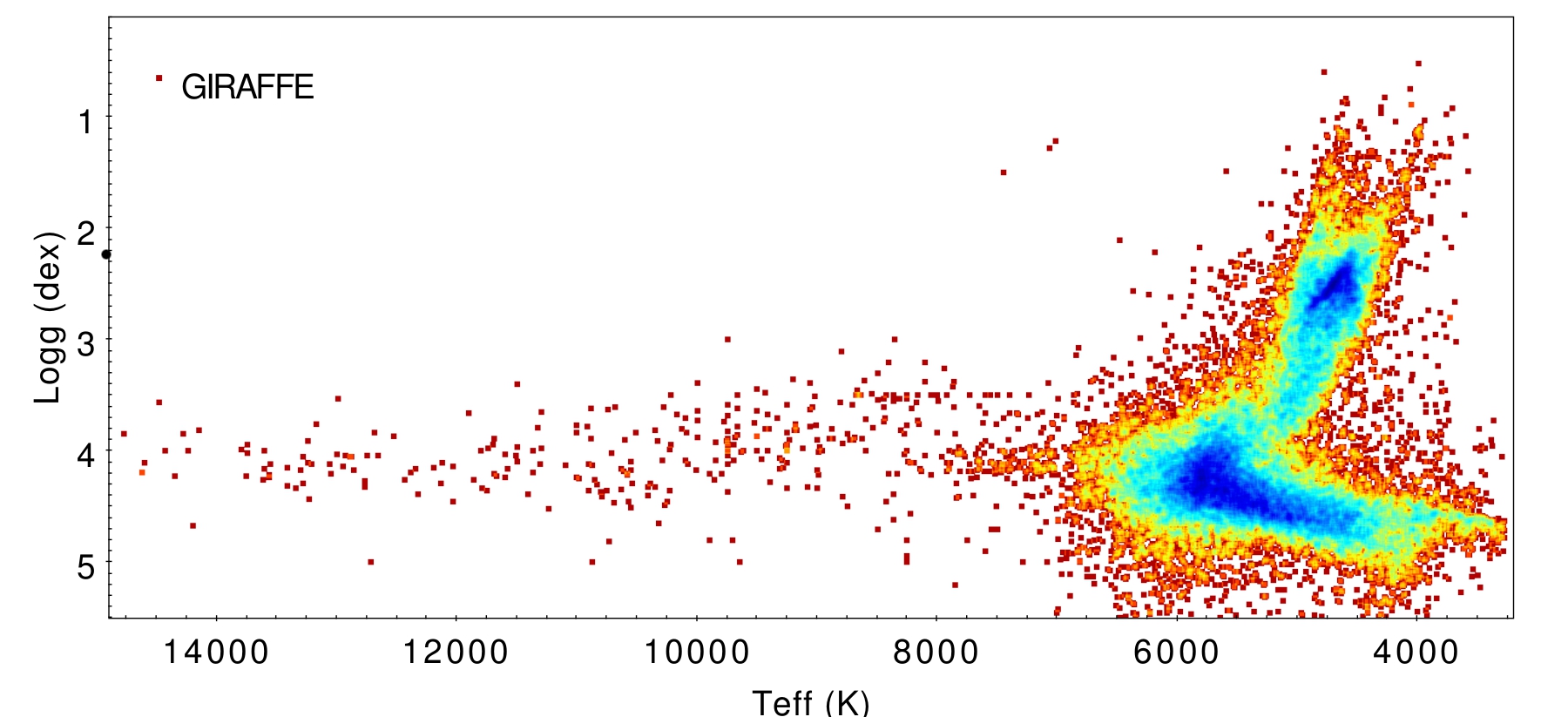
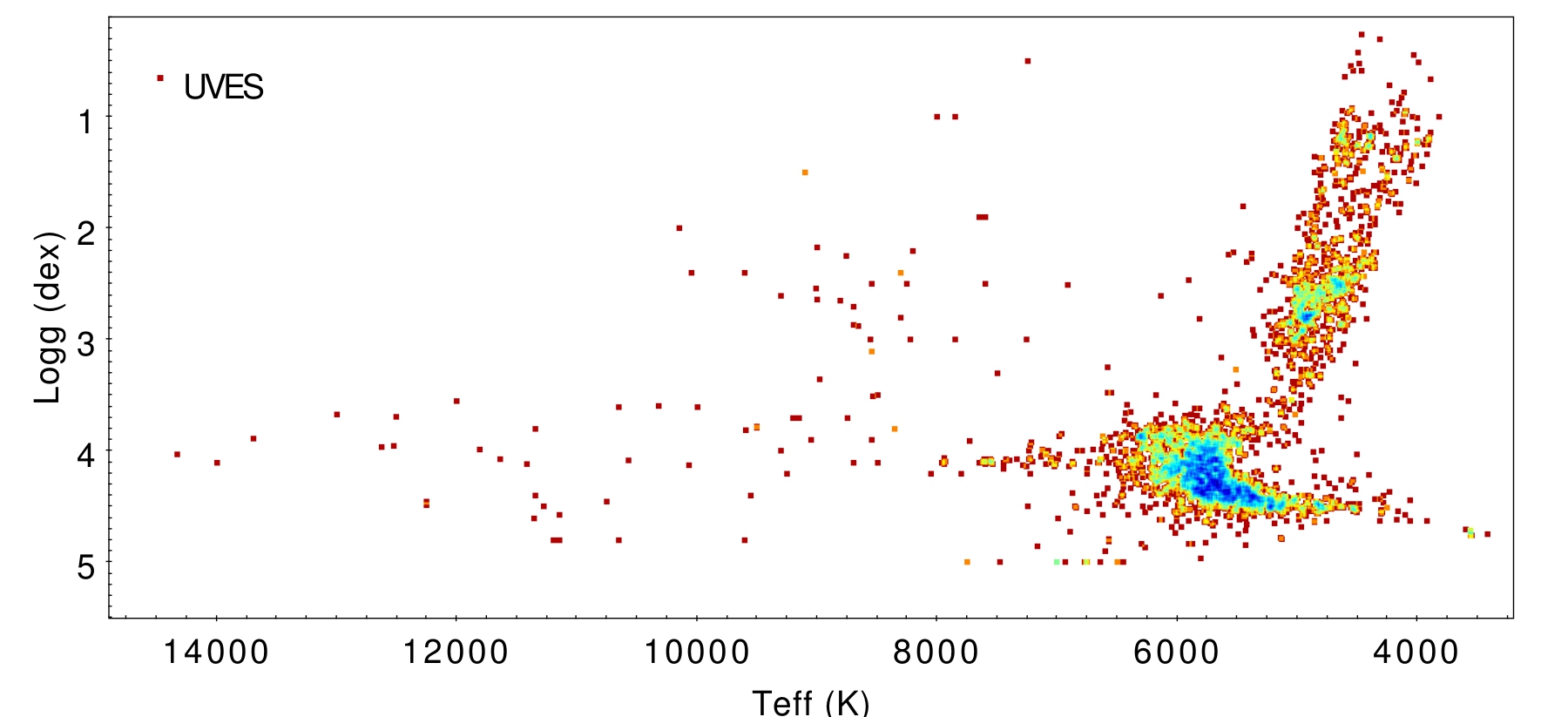
Parameter coverage of the Gaia-ESO Survey (GES) fourth internal release (iDR4), in the surface gravity (logg) versus effective temperature (Teff) plane. The colours refer to the density of stars in each region of the parameter space, with darker colours representing a higher density. The two panels show stars measured with the two spectrographs employed by GES, that form the FLAMES instrument: GIRAFFE and UVES. GIRAFFE has a lower resolution and observes about 100 stars per pointing, while UVES has a higher resolution and observes about 6-7 stars per pointing. iDR4 is based on data gathered from the beginning of the survey in December 2011 until August 2014, and it provides Teff, logg, abundances and other astrophysical parameters for more tha 50000 stars. The figure is taken from Pancino et al., 2017, A&A, 598, 5 (http://adsabs.harvard.edu/abs/2017A%26A...598A...5P).
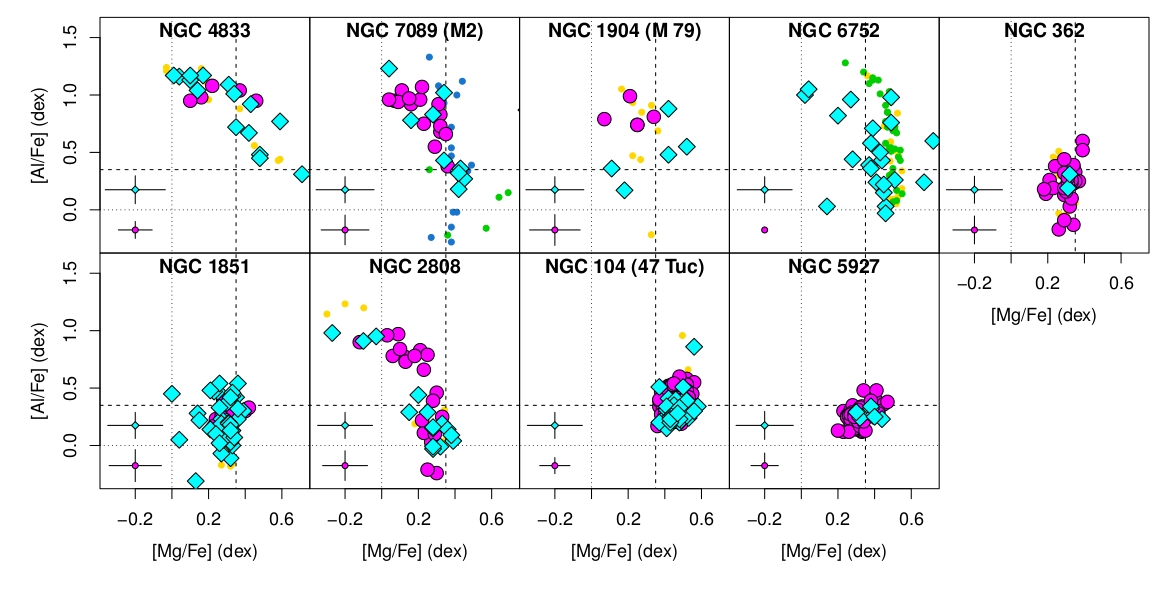
The magnesium-aluminium anticorrelation in stars belonging to the globular clusters observed for calibration purposes. Each panel represents a different cluster, and the coloured symbols represent the aluminium versus magnesium abundances of individual stars observed with GIRAFFE (magenta circles) and UVES (cyan diamonds). Other literature data are represented by small circles of different colour for comparison. The abundance variations within globular clsters involve also other elements like carbon, nitrogen, oxygen, sodium, and more and there is still no self-consistent model that explains their presence and properties. The figure is taken from Pancino et al., 2017, A&A, in press (https://arxiv.org/abs/1702.06083), where we demostrate that the extension of the variations of Al and Mg depends on the clusters mass and metallicity.

